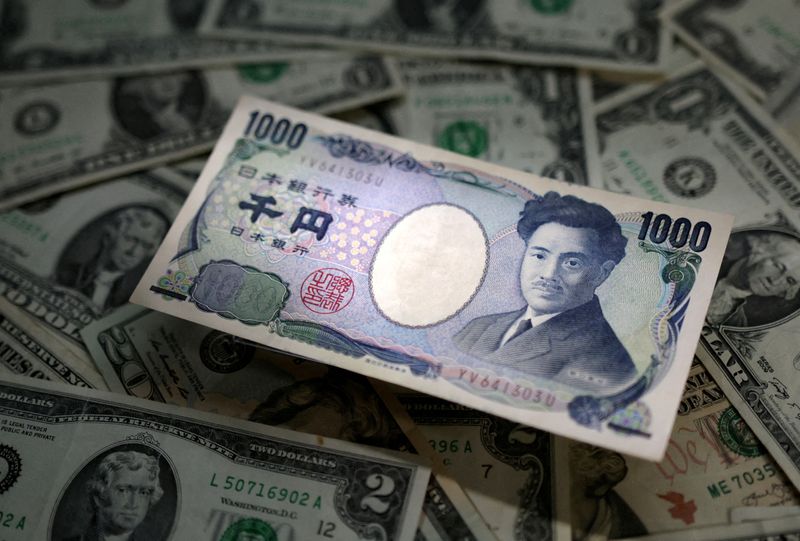(Reuters) -The U.S. dollar eased against the euro on Monday, extending last week’s fall, as the U.S. currency remains under pressure from the Federal Reserve last week signalling the possibility of interest rate cuts next year.
The dollar was higher against the yen as the Bank of Japan (BOJ) kicked off a two-day meeting that could be crucial in determining the timing of the end of the central bank’s ultra-loose stance on interest rates.
Bets that the Fed will lower its benchmark overnight interest rate at its March meeting by a quarter of a percentage point soared last week after the U.S. central bank left its policy rate unchanged in the 5.25%-5.50% range and officials forecast three-quarters of a percentage point in cuts next year.
Meanwhile, European Central Bank policymakers do not expect to change their message on the need for high interest rates before their March meeting, making any rate cut before June difficult, seven people familiar with the matter told Reuters.
“The Fed, having failed to push back on the aggressive dovish repricing we’ve seen over the last six weeks or so, has given license for financial conditions to loosen further,” said Michael Brown, market analyst at Trader X in London.
The Federal Reserve is not pre-committing to cutting interest rates soon and swiftly, and the jump in market expectations that it will do so is at odds with how the U.S. central bank functions, Chicago Fed President Austan Goolsbee said on Monday.
Goolsbee was the latest in a slew of Fed speakers who have pushed back against financial market expectations of how abruptly the central bank will pivot to rate cuts, including Cleveland Fed President Loretta Mester, the New York Fed’s John Williams and Atlanta Fed’s Raphael Bostic.
“The amount of push back we’ve started to see post-Powell’s press conference is clearly a risk to that downside USD view, though that push back on the idea of cuts as soon as March seems largely to be falling on deaf ears thus far,” Brown said.
The dollar index, which measures the currency’s strength against a basket of six rivals, was 0.04% lower at 102.58. The euro was 0.2% higher against the dollar.
The yen retreated on Monday, but held near its recent highs, as the Bank of Japan (BOJ) kicked off a two-day meeting that could be crucial in determining the timing of the end of the central bank’s ultra-loose stance on interest rates. The dollar was last up 0.56% against the Japanese currency at 143 yen.
The Japanese currency has had a volatile few weeks, as markets struggle to get a grip on how soon the BOJ could phase out its negative interest rate policy, with comments from Governor Kazuo Ueda this month initially sparking a huge rally in the yen.
That was later reversed on news that a policy shift was unlikely to come as early as December, and investors now await Tuesday’s BOJ decision for further clarity on the bank’s rate outlook.
In any case, since hitting a multi-decade low against the dollar near 152 in November, the yen has gained around 6% in value as traders have grown increasingly convinced the BOJ’s low-rates drag on the currency will not last much longer.
“This shift in sentiment will no doubt be welcomed by the Bank of Japan and to some extent helps them out with respect to the weakness of the yen ahead of tomorrow’s rate decision,” CMC markets strategist Michael Hewson said.
“There is now less incentive for them to think about altering their current policy settings, although they might hint at starting to execute some form of shift early next year.”
Elsewhere, the Australian and New Zealand dollars, which can often act as barometers for investor risk appetite in the currency market, traded about flat on the day but remained near their respective 5-month highs against the U.S. currency.
The pound was 0.26% lower against the dollar at $1.26465, as the prospect of interest rates remaining higher in Britain than in most other major economies next year offered some support to the British currency.
Bitcoin, was about flat on the day at $41,384.



